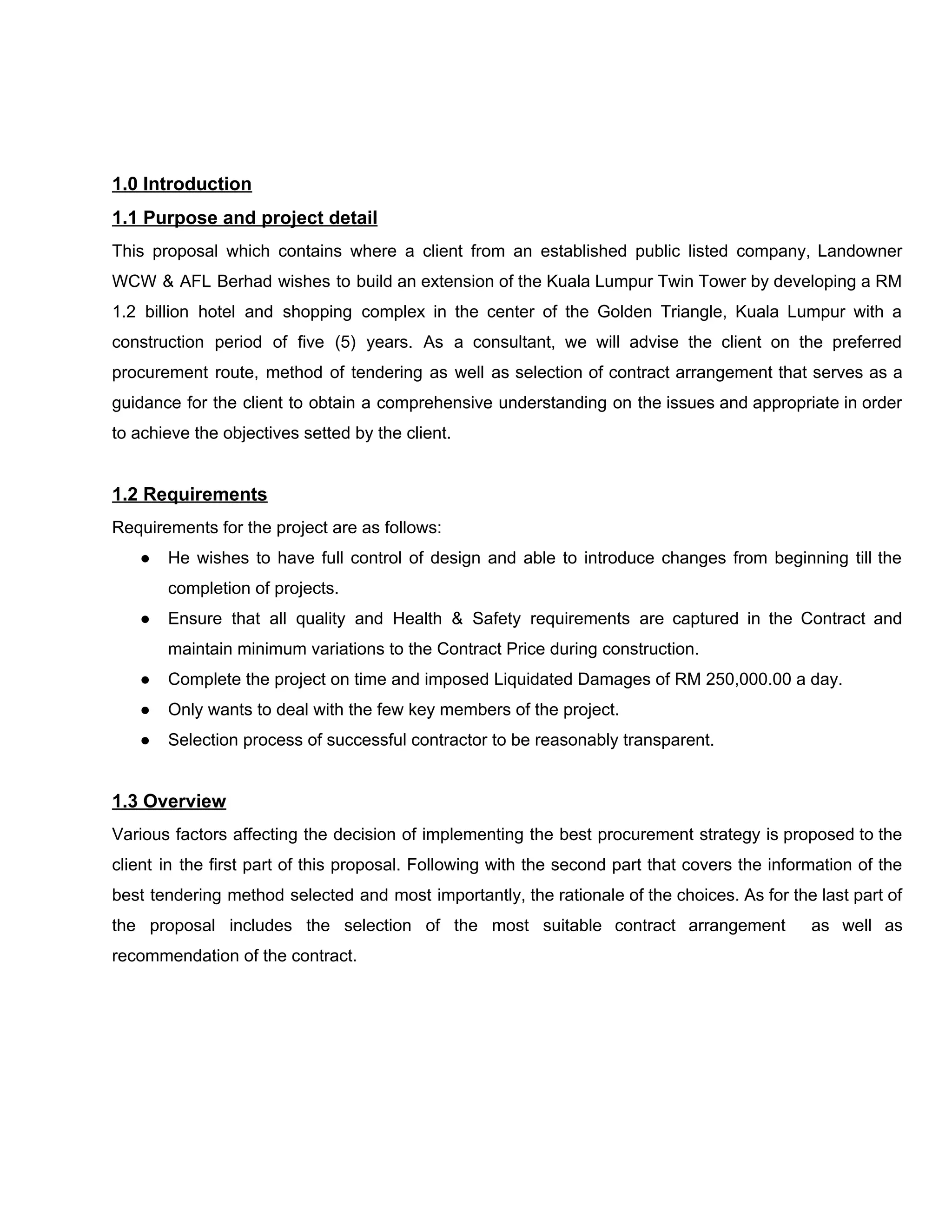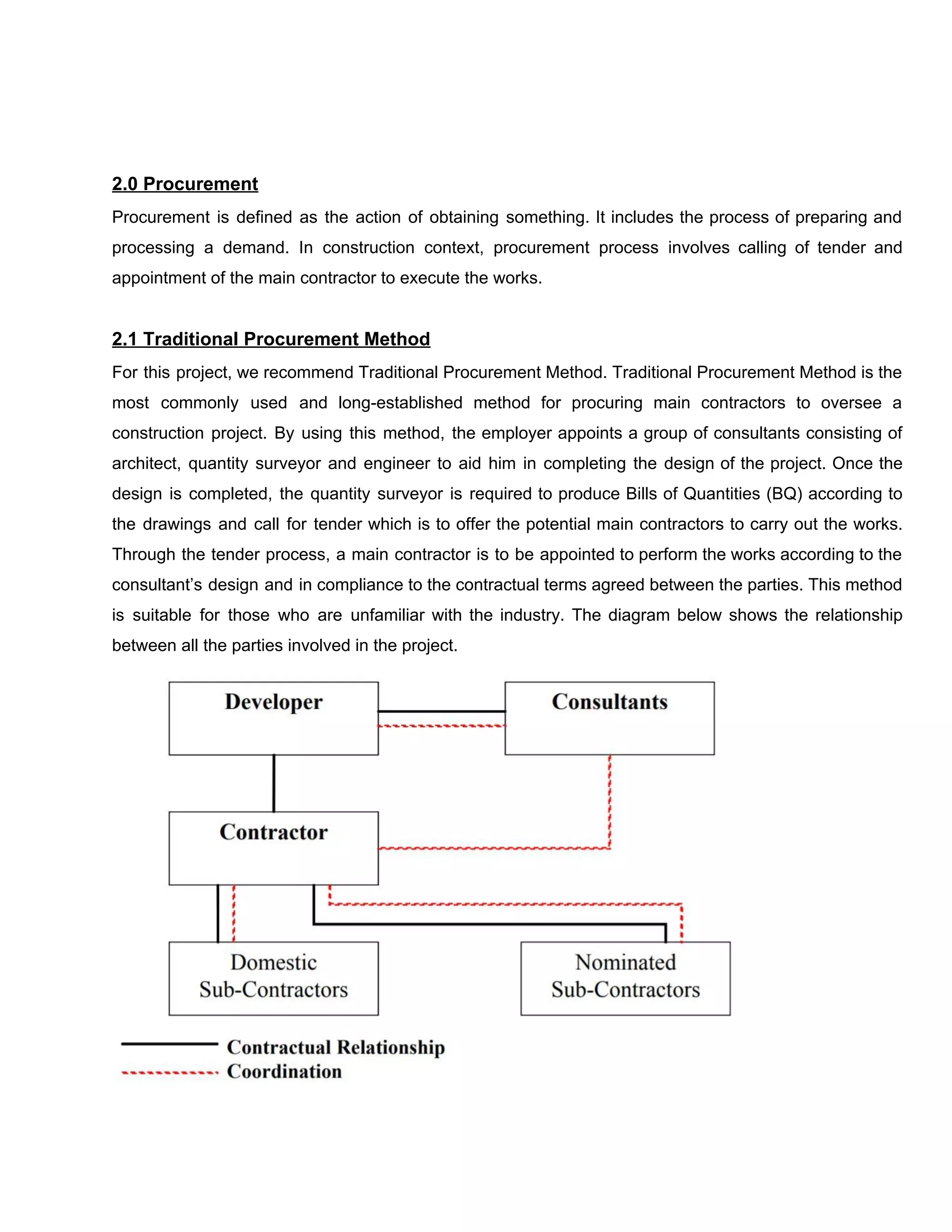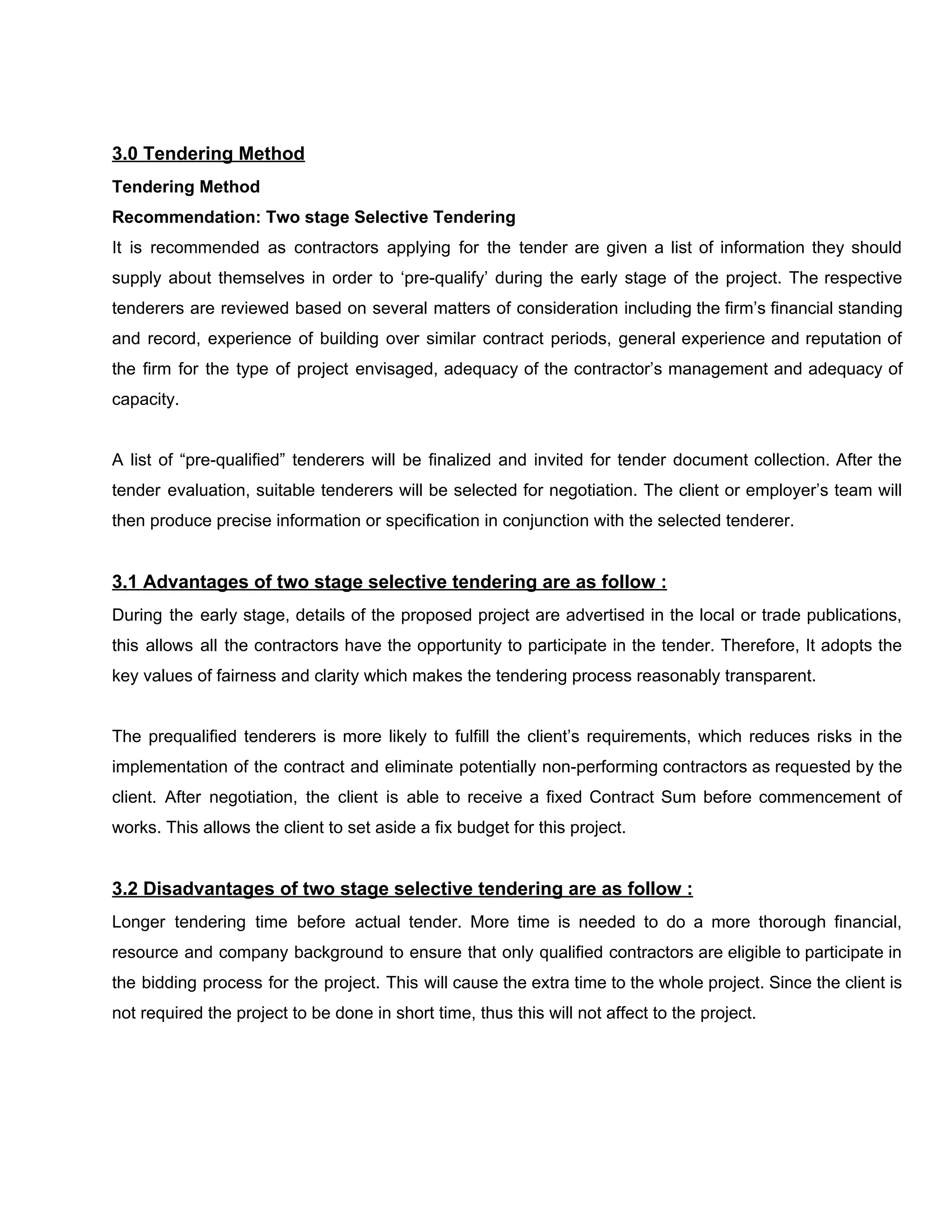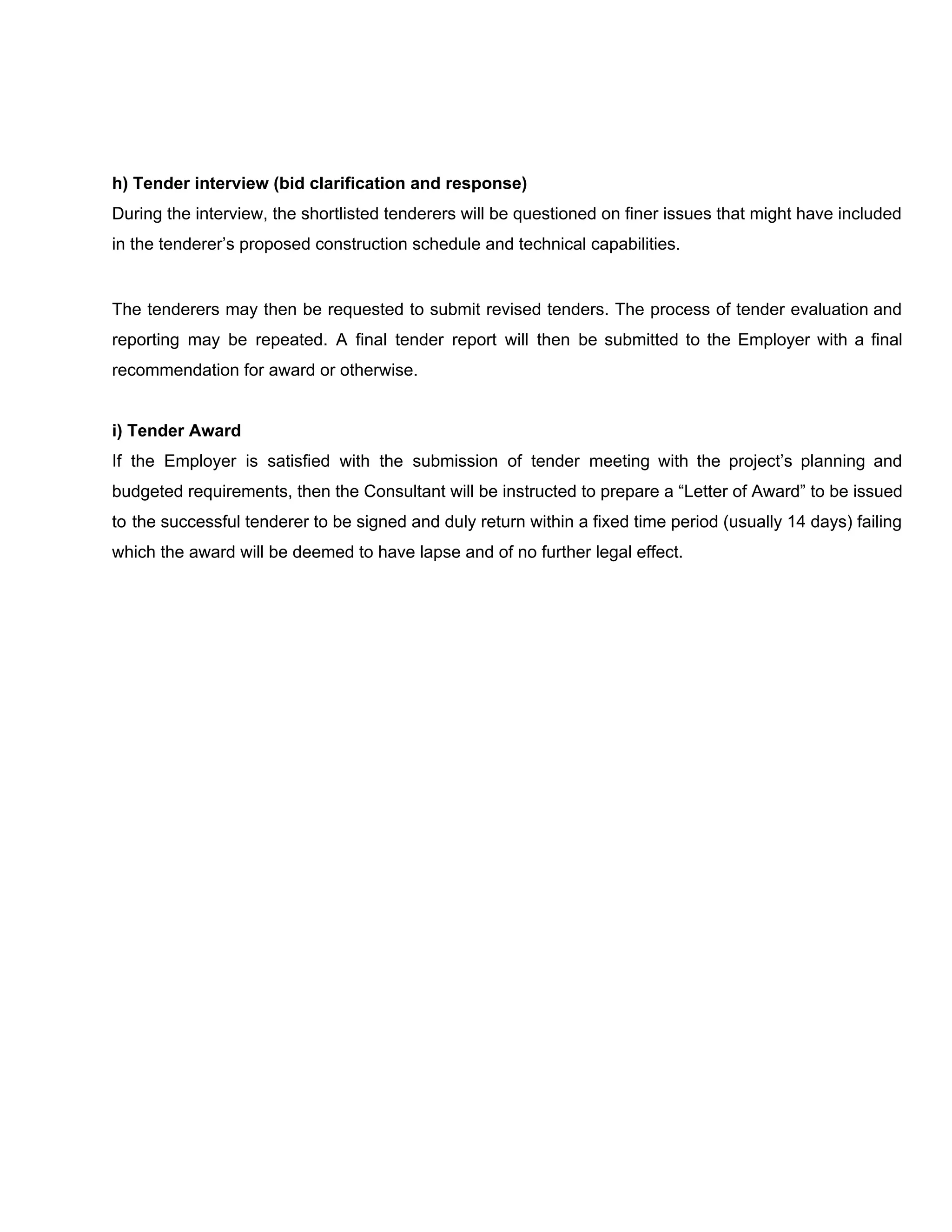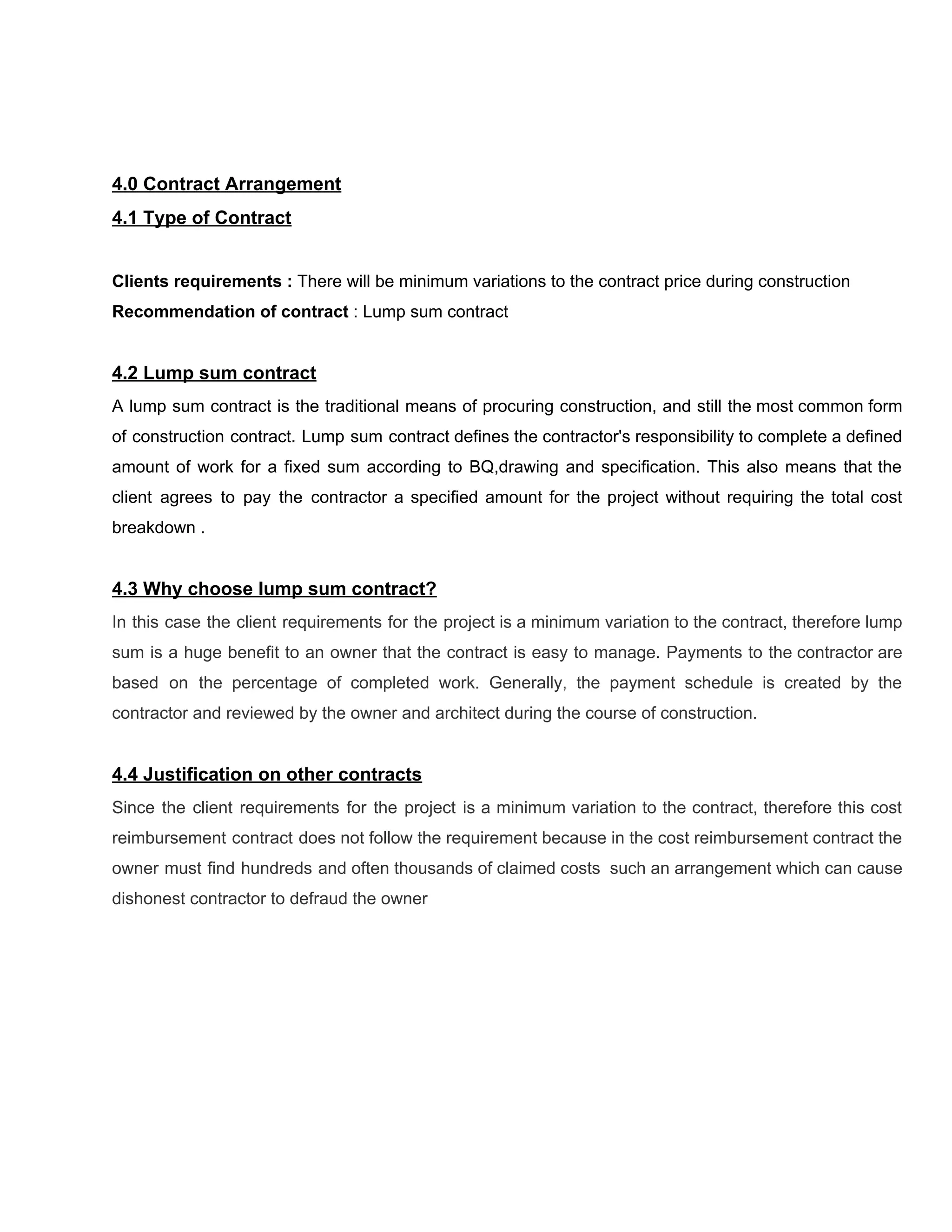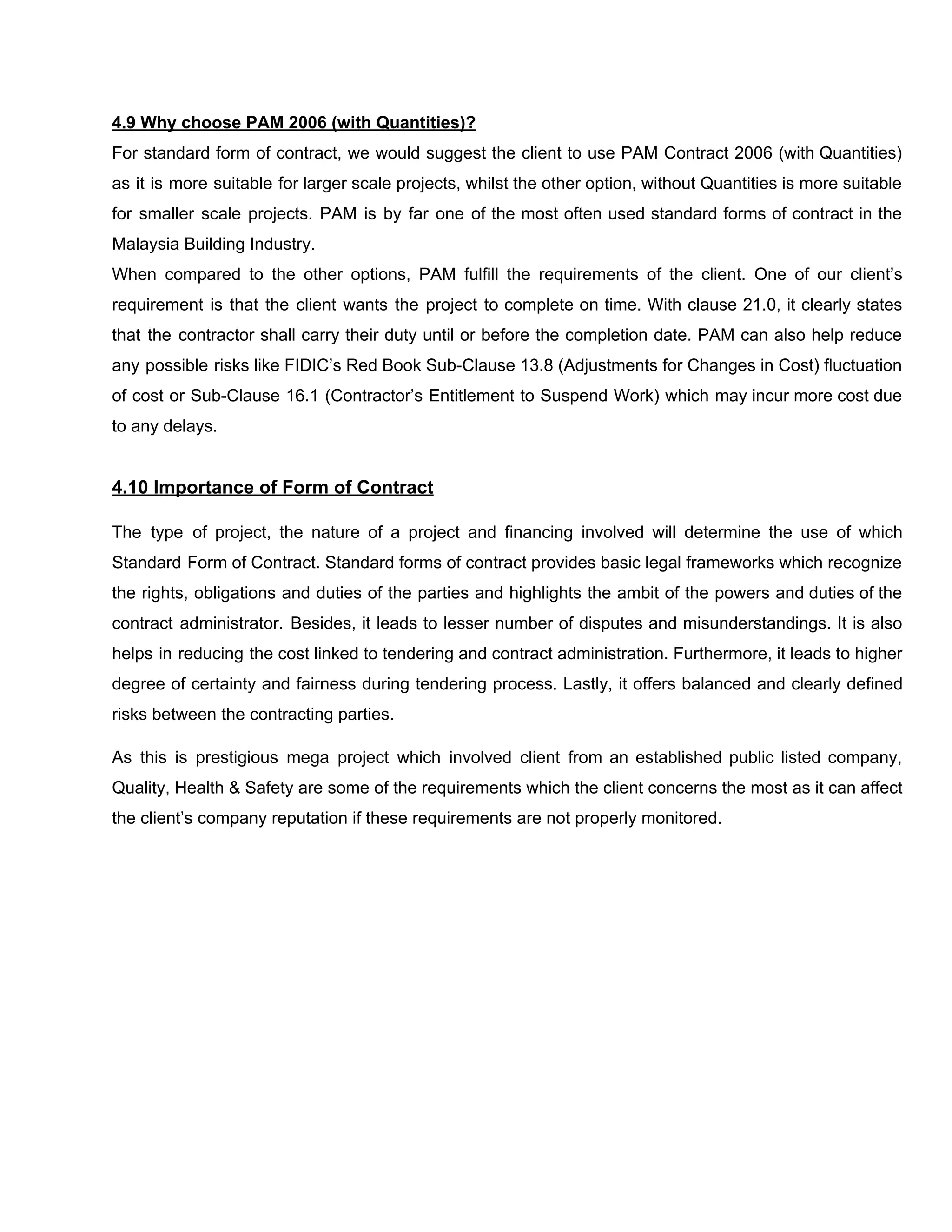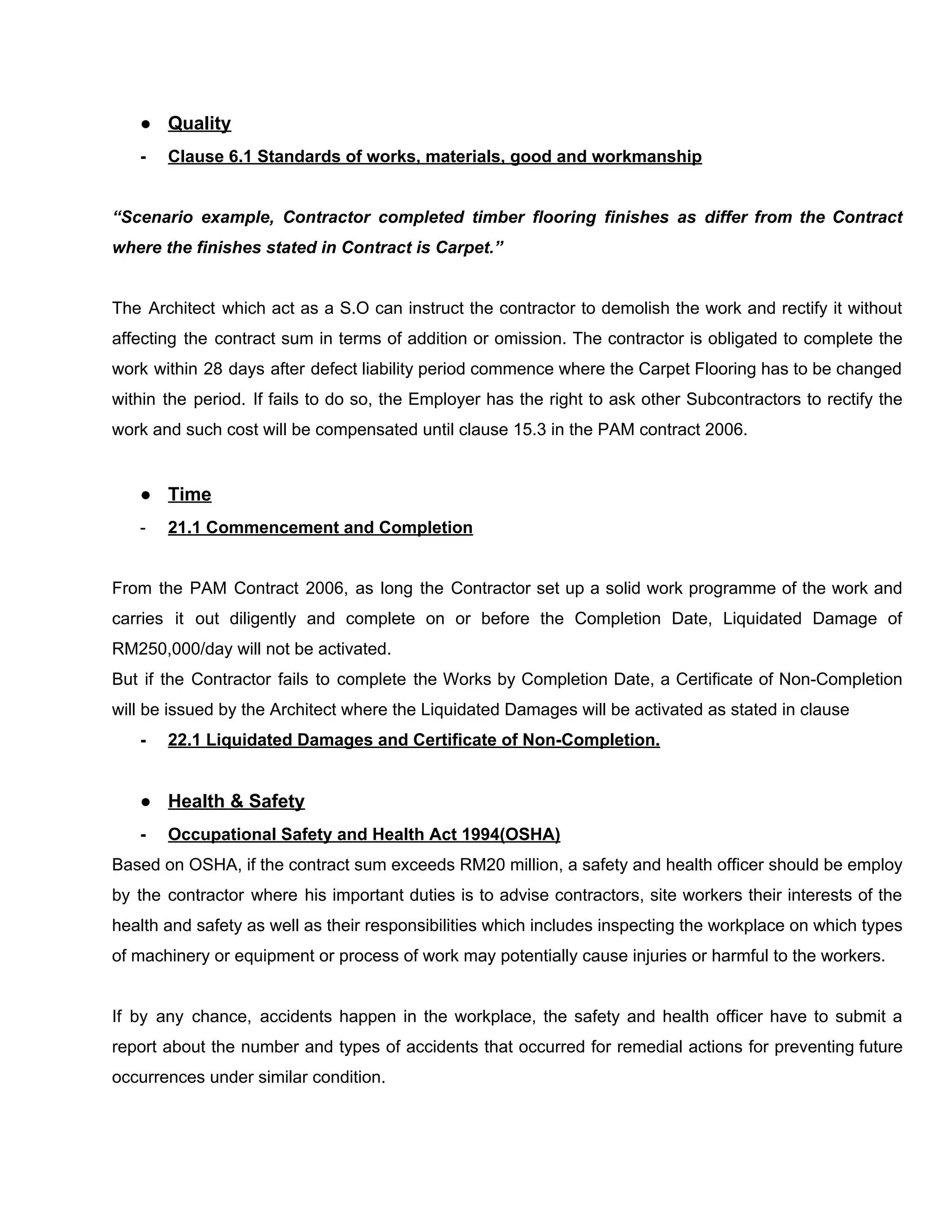This document provides details on the procurement strategy for a proposed RM 1.2 billion hotel and shopping complex development project in Kuala Lumpur. It recommends using a traditional procurement method with two-stage selective tendering. For the procurement, traditional method is suggested as it allows the client full design control and cost certainty. For tendering, two-stage selective tendering is proposed as it provides a transparent contractor selection process while ensuring only qualified contractors bid. The document also justifies the choices of lump sum contract and PAM 2006 form of contract for the arrangement.


